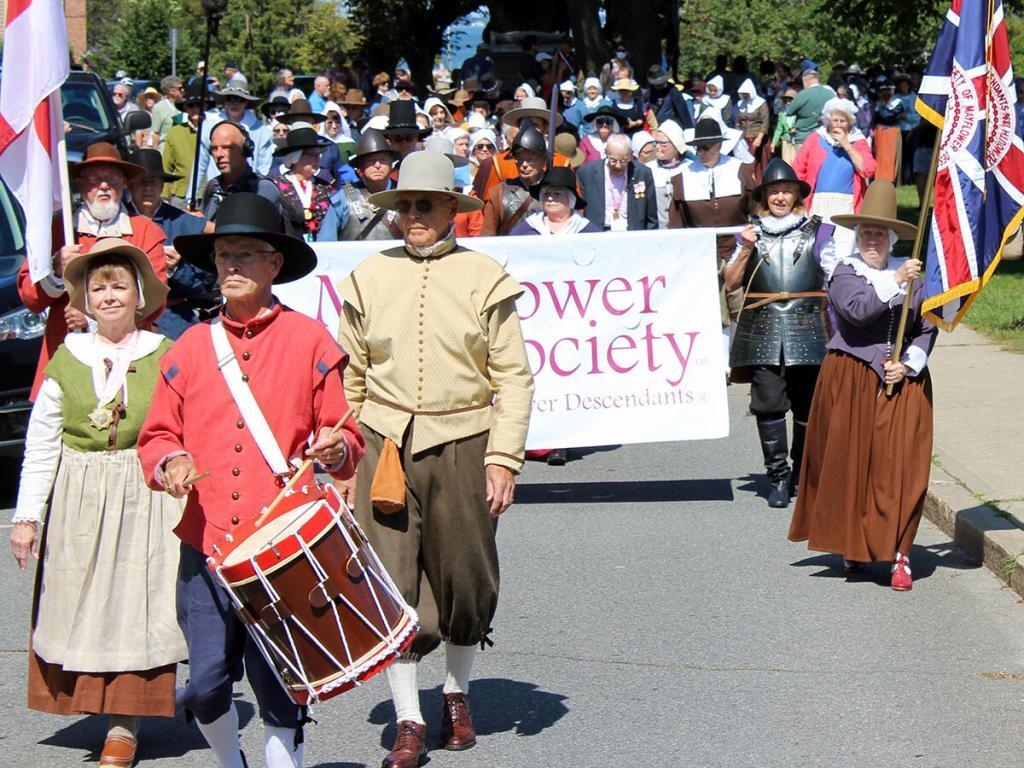
Photo: The GSMD Pilgrim Progress, 2021
While there are a wealth of primary sources describing early Plymouth history, many are written from the perspective of the settlers themselves. There are however some surviving accounts of early Plymouth written by people who did not live in Plymouth. One such source is a letter written by Isaack de Rasieres to Samuel Blommaert. Isaack de Rasieres was the chief trading agent for the Dutch West India Company, sent to America to serve as Secretary to the Director-General of the New Netherlands at Manhattan. While the letter to Blommaert (the Director of the Dutch West India Company) mostly describes the conditions in New Netherlands, the last third describes De Rasieres’ visit to New Plymouth and what he saw there. In Of Plymouth Plantation, William Bradford places this visit in the 1628 chapter, yet the letter itself places the visit in 1627. Either way, De Rasieres’ October visit to Plymouth offers many evocative and informative descriptions of early Plymouth.
De Rasieres begins his description with an overview of Plymouth Harbor and the abundance of fish therein. He then goes on to describe a “small river of fresh water, very rapid, but shallow, which takes its rise from several lakes in the land above” which is Plymouth Town Brook. He goes further in describing how “This river the English have shut in with planks, and in the middle a little door which slides up and down…” and “At the mouth they have constructed it with planks, like an eel-pot, with wings, where in the middle is also a sliding door..”. Thus when the herring spawn in the spring the early settlers were able to dam off the Town Brook to more easily collect the herring for their fields.
De Rasieres also gives a good description of the town itself. He writes that “the houses are constructed of clapboards, with gardens also enclosed behind and at the sides with clapboards”. He then goes into the town’s defenses, writing that around the town there was “a stockade against sudden attack; and at the ends of the streets there are three wooden gates. In the center on the cross street, stands the Governor’s house, before which is a square stockade upon which four patereros (small artillery pieces) are mounted”. He also mentions that “upon the hill they have a large square house, with a flat roof, built of thick sawn planks stayed with oak beams, upon the top of which they have six cannon”
De Rasieres then describes how and where the Pilgrims kept their church service. This description might seem familiar as it forms the basis of what we think of when we imagine the early settlement’s Sunday procession to church. He describes how “the lower part [of the fort] they use for their church, where they preach on Sundays and the usual holidays.” He then goes on to say that “They assemble by the beat of drum, each with his musket…” and “place themselves in order, three abreast…and so march in good order”. This image of the Pilgrims marching by beat of the drum up to church, in a long orderly column, is one that is seen in countless images and reenactments including the GSMD’s Pilgrim Progress.
Lastly De Rasieres talks briefly about the town’s government, laws, and customs. He states that “Their government is after the English form. The Governor has his Council, which is chosen every year by the entire community, by election or prolongation of term.” Which corroborates with similar descriptions written by Bradford and Winslow and of course with the Mayflower Compact itself. He then goes on to talk about land division, “They apportion their land according as each has means to contribute to the eighteen thousand guilders which they have promised to those who had sent them out…” This description likewise matches the agreement the Plymouth settlers came to with the London adventurers (investors) and had earlier in the year voted on at their yearly election court.
These are just some small snippets of Isaack de Rasieres’ letter. He gives additional descriptions of Plymouth, especially its wildlife. There is also the other part of the letter that deals with the New Netherlands and while this doesn’t pertain to Plymouth directly, the descriptions are still contemporary and part of the Pilgrims’ wider world. If anyone is interested in reading more, Isaack de Rasieres’ letter along with two others’ correspondences can be found in the book “Three Visitors to Early Plymouth” edited by Sydney V. James Jr.
